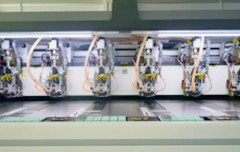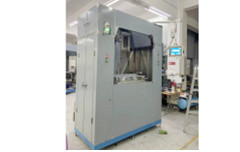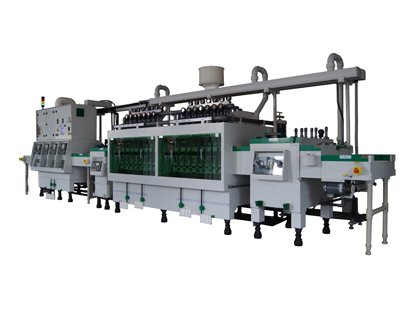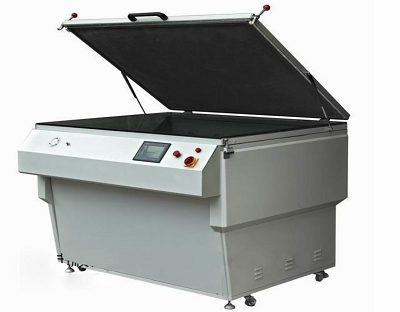Most holes, including NPTH and PTH holes, will be drilled on the pressed plate during initial drilling. When drilling PTH hole, the diameter of the hole shall be compensated under the original size required by the customer, considering that the hole diameter will be reduced during copper deposition and electroplating. For the larger hole diameter, the relief hole should be drilled first. If the spacing between holes is too small or the spacing between holes and lines is too small, the method of second drilling shall be considered.
There are two main functions of holes: one is to connect lines of different layers; The second is to facilitate the insertion and positioning of components. Different substrates have different effects on drilling. The main one is the glass fiber in the substrate. The thicker the glass fiber is, the easier the hole will be drilled off center, and the rougher the hole wall of the drilled hole is. Base materials with different TG values also have different effects on drilling. When drilling the plate with high Tg value, the hole wall is less prone to glue slag. However, the plate with high Tg value is harder and rougher, which is easy to cause the wear of the drill tool and rough hole wall during drilling.
A drill knife is used to drill holes. Drilling tool is a kind of tungsten carbide, which is hard, brittle and relatively economical. The quality of drilling tool will directly affect the quality of drilling, so the inspection of drilling tool is very important, especially the inspection of reused drilling tool. In order to reduce the average cost of drilling, the drill knife will be inspected and polished under the microscope after being used to achieve a reusable state. The grinding of the drilling tool is only carried out on the nozzle, and the edge of the drilling tool becomes relatively blunt after the previous use, so the number of times of reusing the drilling tool is limited. Generally speaking, the number of times that the drilling tool used for smaller hole diameter is reused is less than that used for larger hole diameter. The main reason is that the drilling tool used for smaller hole diameter is easier to break and cannot be reused; Secondly, the requirements for drilling cutters are higher, and the repaired cutters still can not meet the requirements for drilling cutters.
One of the reasons for this design is that there is enough space for the debris generated in the drilling process to be sucked out, so as to reduce the friction of the drill. Therefore, when drilling, the thickness of the laminated plate plus the total thickness of the aluminum sheet and the backing plate shall not exceed the length of the threaded area of the drilling tool.
When drilling, several plates are usually stacked together for drilling. A layer of aluminum sheet will be laid on the top of the laminated plate. This piece of aluminum has many functions:
1. center the drilling cutter to prevent the hole drilling deviation;
2. lower the temperature of the drill to prevent the drill from breaking;
3. prevent copper foil from burring
4. prevent contamination of holes and drilling tools;
5. prevent the imprint left by machine drilling due to pressure on the plate surface. At the same time, a paper board shall be padded at the bottom of the laminated plate, which is used to:
1) Provide a good cushion for the drill cutter after drilling the laminated plate;
2) Prevent copper foil from burring;
3) Prevent the hole and drilling tool from being polluted by debris;
4) Reduce the temperature generated during drilling;
5) Improve the quality of drilling.
During the whole process of drilling, the humidity, temperature and cleanliness of the plant must be well controlled.
Humidity and cleanliness will not only affect the quality of drilling, but also have a lot of negative effects on the drilling rig. The air with high humidity will corrode the components of the drilling rig, thus affecting the working efficiency and maintenance cost of the drilling rig. Dust in the air will also etch the original parts of the drill.
Deburring
Machine drilling will leave burrs on the edge of the hole. These burrs must be removed in order not to affect the subsequent copper deposition and dry film sticking.
Decontamination
Since the copper foil in the inner layer is very thin, it is easy for the copper to be covered by the residue carried by the drill knife from top to bottom during drilling. Although these residues are very few, for the copper foil which is very thin, the attached residues will affect its bonding with the copper in the copper precipitation process, and then affect the conductivity of these holes. Therefore, it is necessary to decontaminate the plate surface and holes.








 Dec. 20, 2019
Dec. 20, 2019 




